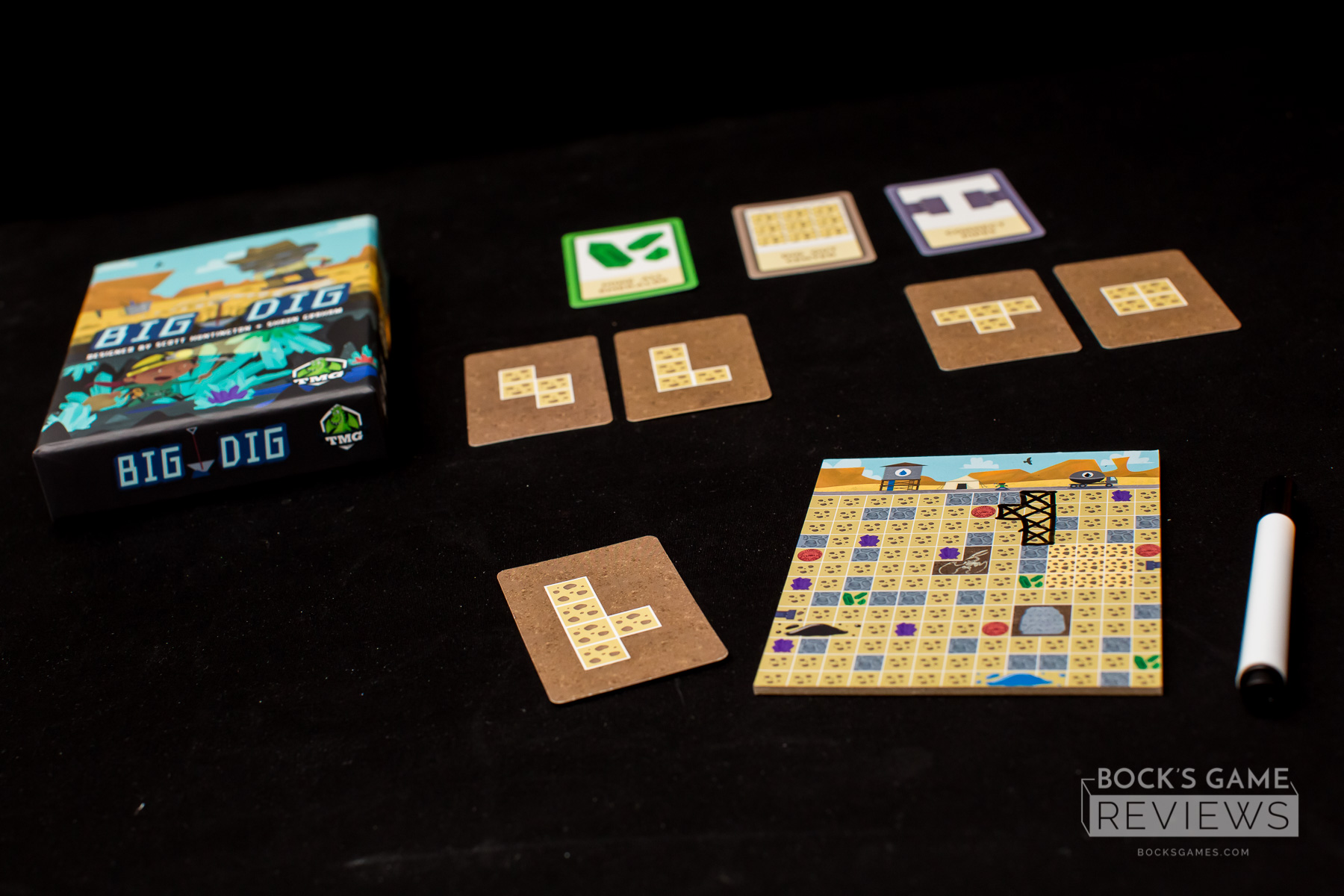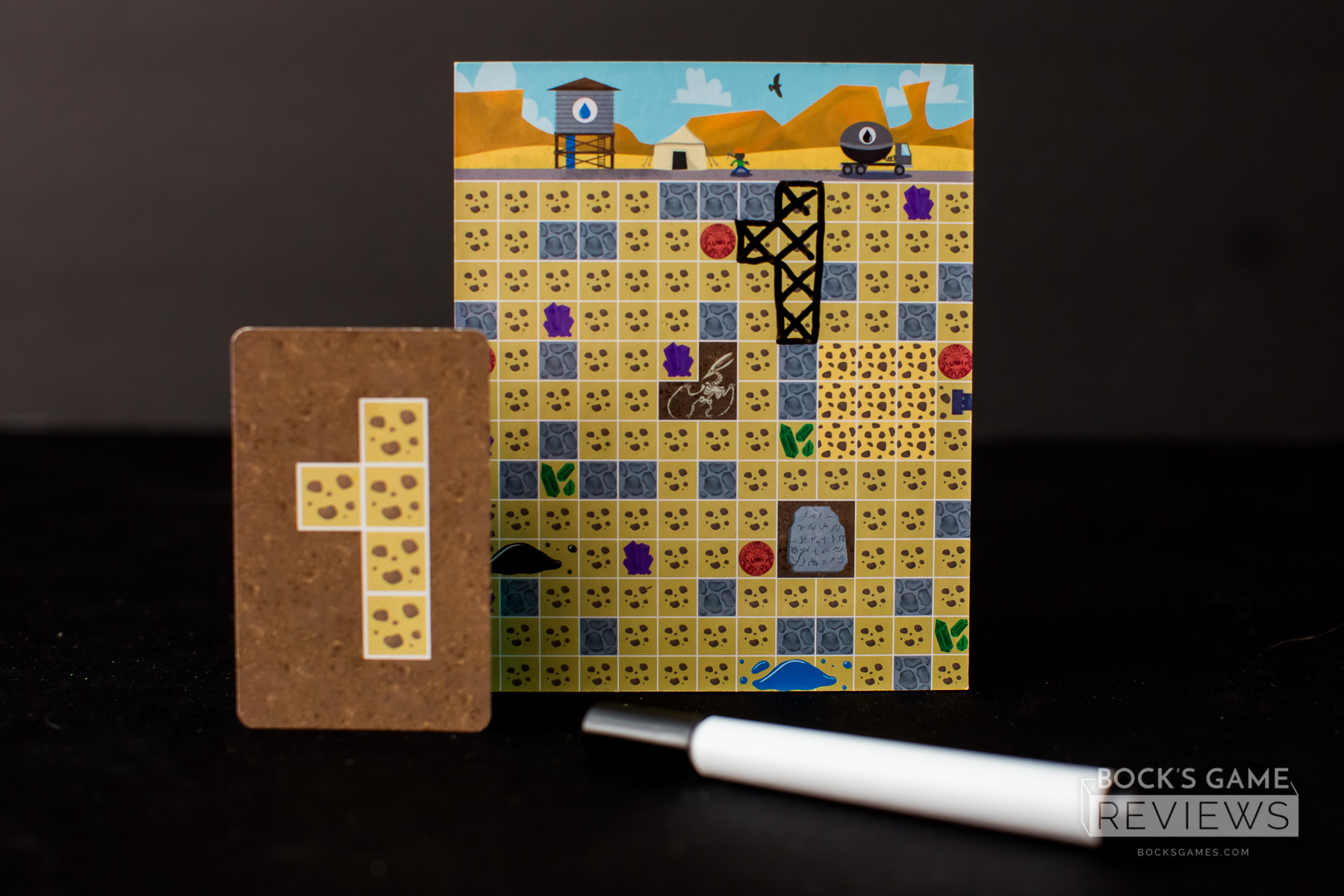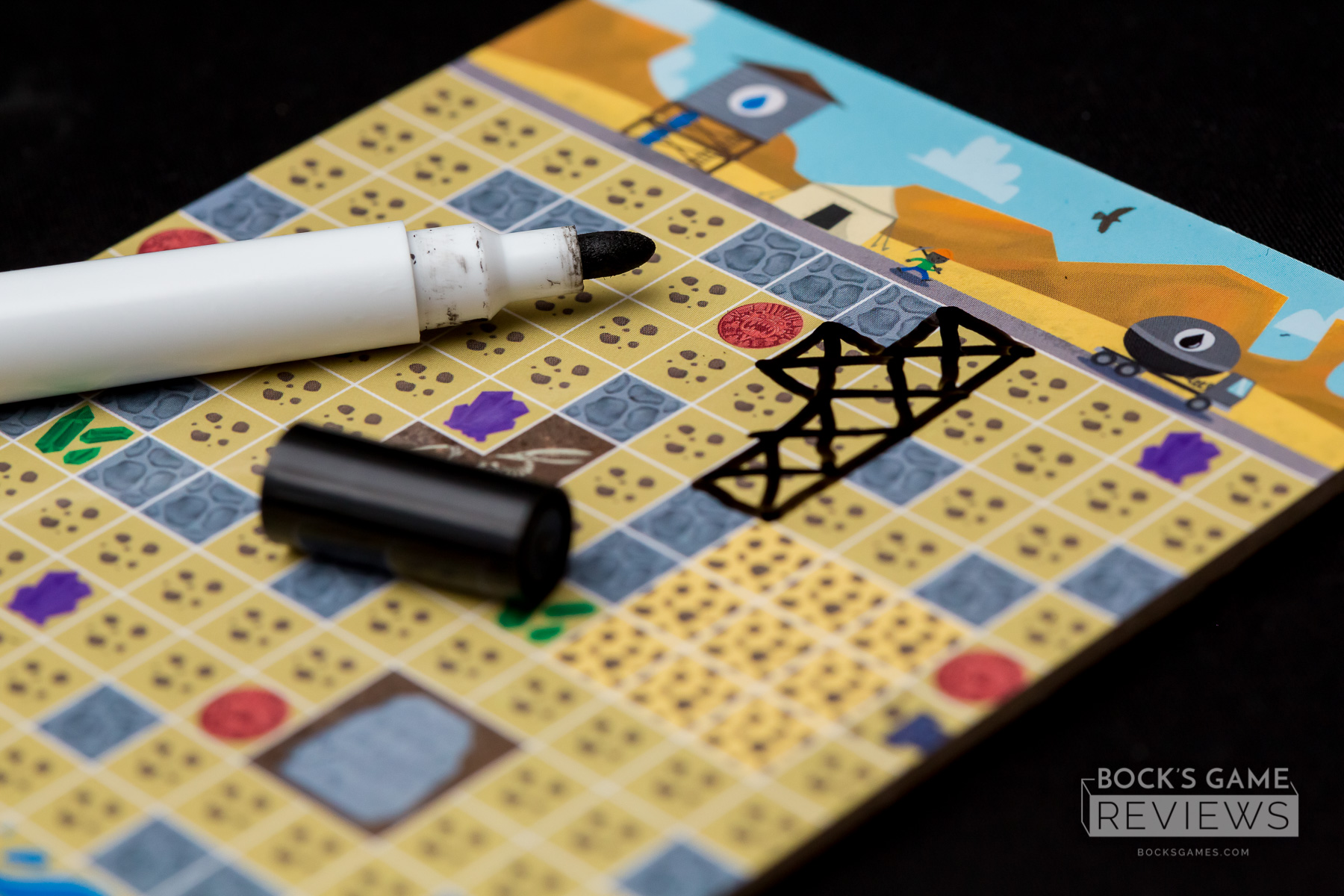Board Game Review
Designers: Shaun Graham and Scott Huntington
Publisher: Tasty Minstrel Games

REVIEW BY CATHY. Roll-and-writes have been dominating the small box market as of late, and they’ve expanded far beyond their Yahtzee origins to include colorfully illustrated sheets, dry erase boards and some pretty innovative mechanisms. Big Dig is one of the newest installments in the roll-and-write craze. But does it stand out in the sea of dice and tiny pencils?
Like Welcome To…, the darling of last year’s roll-and-write offerings, Big Dig replaces dice with cards. Each round begins with a pool of five cards to draft from, each showing a polyomino (Tetris shape) to draw on your board if selected. You’ll use these polyominoes to dig tunnels (fill in squares) down from the surface (the top row of your board) in order to reach various items buried underground. Each game has three objectives that will require you to either excavate certain objects or dig a tunnel between two locations. The first player to complete all three objectives wins the game.

The very first time I played this, I loved it. It took only ten minutes to play, it was easy to set up and teach, and it had polyominoes, which, for some unknown reason, I really can’t get enough of. It was fun, light-hearted, and I really enjoyed the variability in the objectives (the game comes with ten).

But after a few games, we realized that something was wrong. This game is essentially a race, right? Whoever achieves all three objectives first wins. And there’s one important rule that all races should have in common: the racers get to begin the race at the same time. But Big Dig breaks this essential rule. One player gets to go first. And is it fair to have a racing game in which someone gets a head start? No, no, and no.

Indeed, in most of the games I played, the person who went first ended up winning. The game attempts to address this by having five cards in the pool so that in a 2- or 4-player game, the first player is also the last to choose a card before they are refreshed for the first time. But it just isn’t enough to overcome the advantage of getting to be the first to dig.
A possible work-around for this problem would be to have everyone draft cards from the pool and then write on their board simultaneously. But this would also require a rotating first player marker and for the cards to refresh every round instead of when they run out. It would also make a tie possible, with no obvious tie-breaker.

I started out really loving this game. The artwork is adorable and the components are solid. I especially loved having those thick double-sided dry-erase boards instead of wasteful sheets of paper that most other roll-and-writes employ. But that first player advantage ruined it for me. At its core Big Dig is a fun, light game with cute artwork and a nice twist on the roll-and-write genre, but, unfortunately, an unfair race just isn’t a race worth running.
